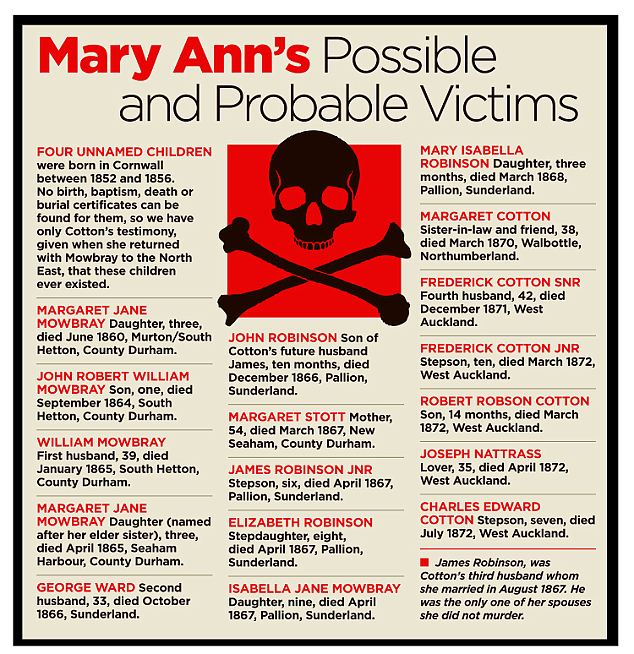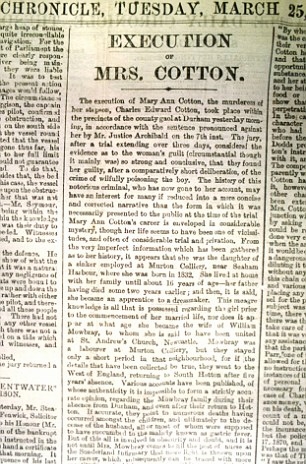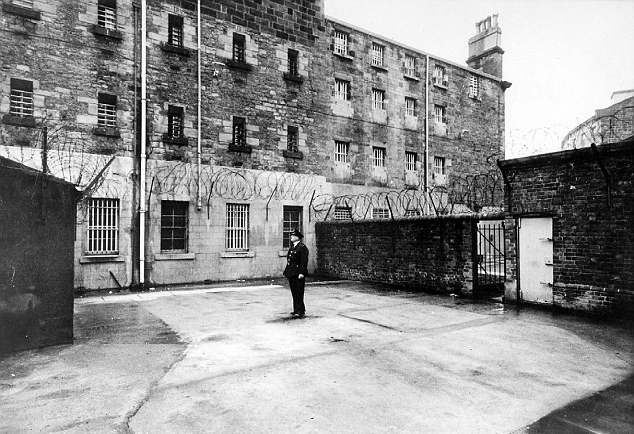Four months later Robinson became Cotton’s third hubby. Their child was born and died within a year. Robinson became suspicious when she was trying to get him to set up expensive life insurance, he found out she had debts and had stolen from him and kicked her out of his home. He had a lucky escape. Mary Ann pretty much lived on the streets for a while until her friend Margaret introduced her to her brother, Frederick Cotton. Margaret had been looking after Fred’s kids, until she conveniently died of stomach problems; Mary Ann took the opportunity to slip into her still warm shoes and married Fred and had yet another baby.
Fred soon died and the insurance cheque flew straight into Mary Ann’s account once more. At this point her long time lover, Nattrass moved in with her. Mary Ann started work as a nurse to John Quick-Manning who was recovering from small pox. During her nursing she managed to fall pregnant with his child. John’s two other sons died soon after. Nattrass generously altered his will in Mary Ann’s favour, and guess what, he soon died too.
Because most of the deaths weren’t suspicious and Mary Ann kept moving around, she managed to get away with her spree for much longer than would be expected these days. The police force were small and not well connected between regions. It was actually investigative journalism that first started piecing together her gory past. Fingers started to be pointed, evidence was all circumstantial, but every new story unearthed brought more solidity to the rumours of foul play.

Eventually, in 1873, about 20 years after her first killing, she was brought to justice. She had poisoned her 7-year-old stepson Charles Edward Cotton to make room for her blossoming Quick-Manning relationship, but a local GP smelled a rat and had the boy exhumed. Sure enough, arsenic was found in his system and Mary Ann was arrested, tried and hanged.

The hanging was a botched job, the drop wasn’t long enough and she was left twitching and crying out in agony. The executioner had to press down on her to finish her off. A rather fitting end. She still lies now, buried in the grounds of Durham Prison.

So why haven’t we heard about this woman before? Well, it seems that for some reason, as the mists of time drew across the details of the story she found some sympathies in the media. People have excused her actions as the desperate actions of a down trodden woman at a time when being a woman was hard. Now I’m not saying times weren’t hard for women back then, they certainly were, but there really is no excuse for poisoning to death tens of people is there?
☛ Read Next: The Somerton Man — A Properly Weird Aussie Murder Mystery















